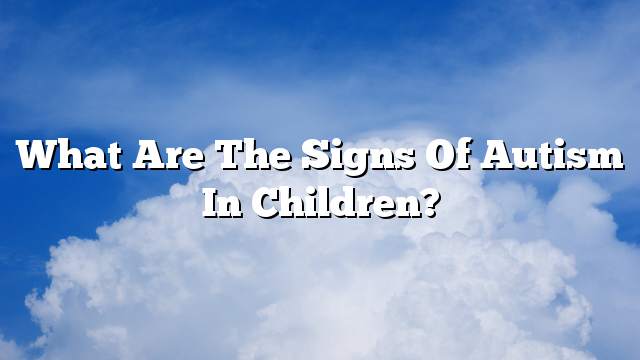Autism
Autism is a group of mental, mental, and behavioral disorders that occur in children in infancy and before the age of three, affecting their development, development, social interaction, and verbal and nonverbal communication with those around them. .
Signs of injury
social skills:
- Lack of visual communication with mother during or after breastfeeding.
- Not smiling at the mother, smiling at him, or even issuing sounds normally issued by babies.
- Not responding to his name, or any familiar voice, like the voice of his mother, and not circumventing to know the source of sound.
- Not responding, or recognizing the feelings of others, and refusing to embrace.
- The child’s interaction with other children, the tendency to stay alone, or play alone.
- Love arranging things, or sorting them, based on shapes and colors.
- Show the child for strange reactions, direction of high sounds, light, or even touch.
language skills:
- Speaking at a later age, compared to children of his age.
- Loss of speech ability for long periods.
- Loss of ability to pronounce, or use certain words or phrases that he already knows.
- Repeat the same words, or phrases repeatedly, without changing the rhythm.
the behavior:
- Perform repetitive movements such as shaking hands, waving them, or rotating circles.
- Perpetually moving, performing certain rites permanently, and losing tranquility in the event of any minor change in these rituals.
- Difficulty adapting to environmental changes, such as changing bedtime, or rearranging furniture.
- Unusual contact with toys, or other objects such as keys, or rubber bands.
the reasons
- Genetic defect during intrauterine formation.
- Incomplete brain development.
- The nervous system does not grow properly.
- The presence of genetic factors.
- The existence of biological causes, such as the mother’s injury during pregnancy in some diseases.
- Problems during labor, or during childbirth.
How to Diagnose
Diagnosis of the condition through the procedure of the doctor competent examination of the child, through:
- Search the family history of the child’s family.
- Conduct mental and physical tests of the child.
- Check and evaluate the rate of increase in weight and height of the child.
the cure
There is no specific treatment for the disease, but the child is followed up in order to avoid complications in the future, to help the child to integrate into the environment, and with other children, by enrolling in centers or institutions for autistic children to help them acquire social skills , Linguistic, and behavioral problems, and the response of autism to education and training varies and the probability of full improvement is contained.
